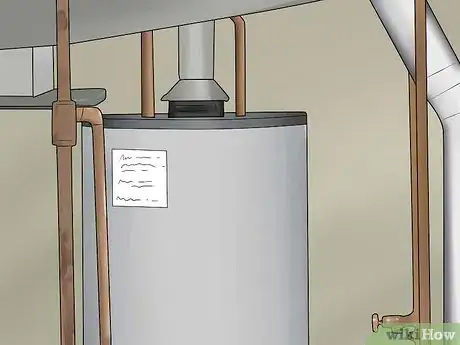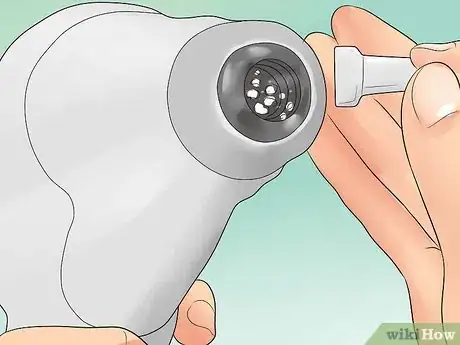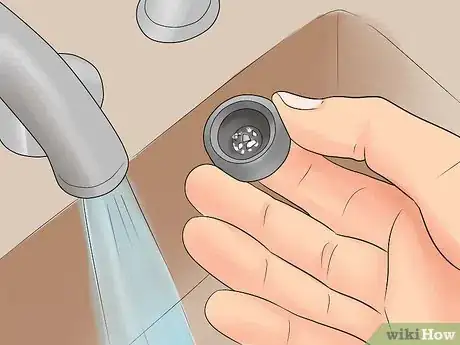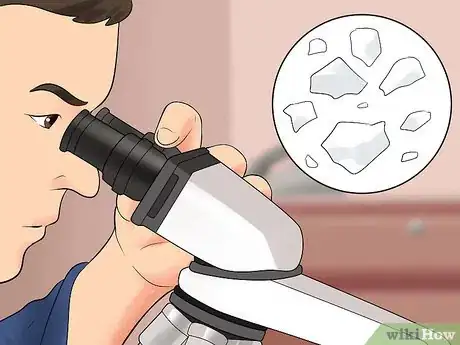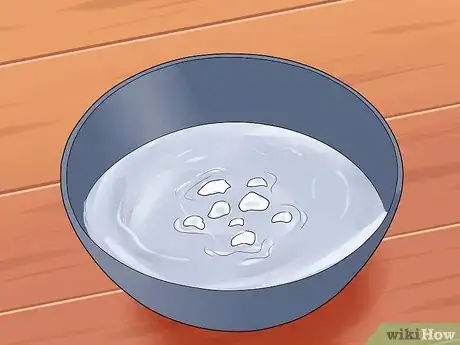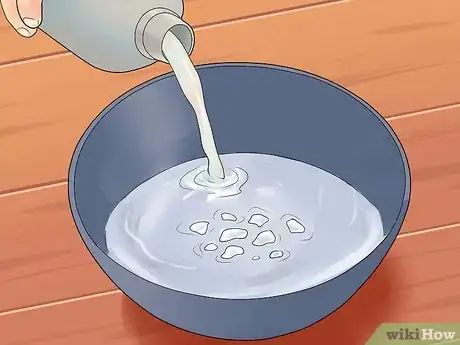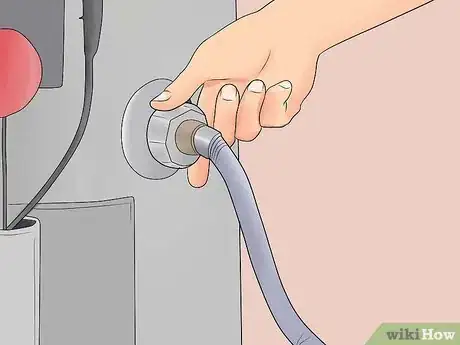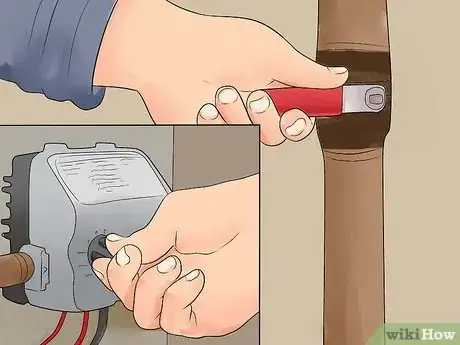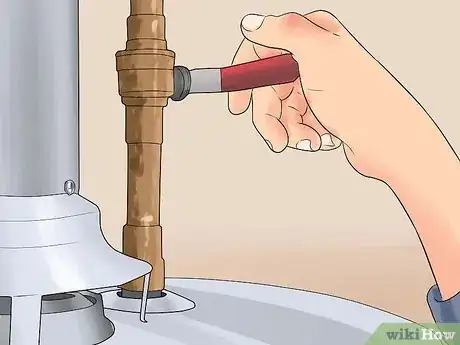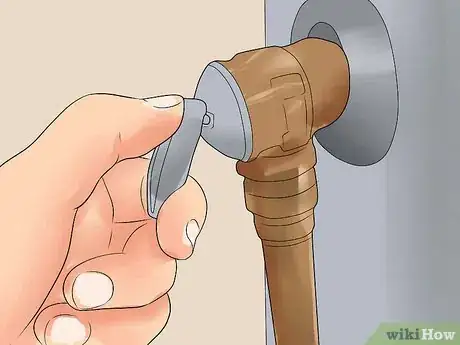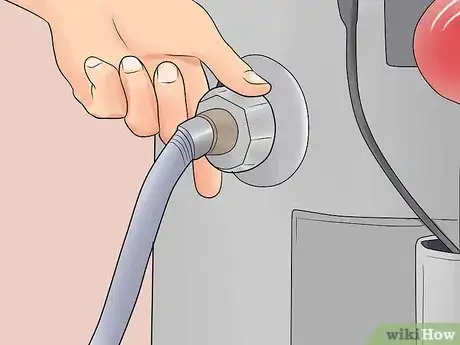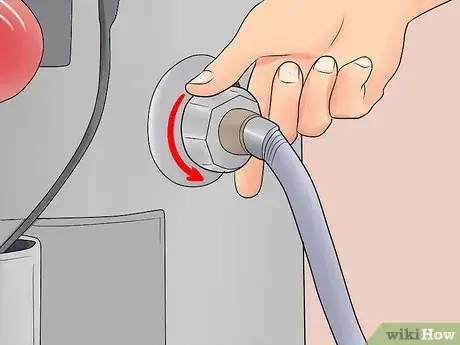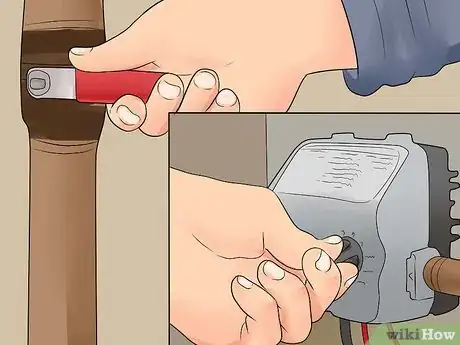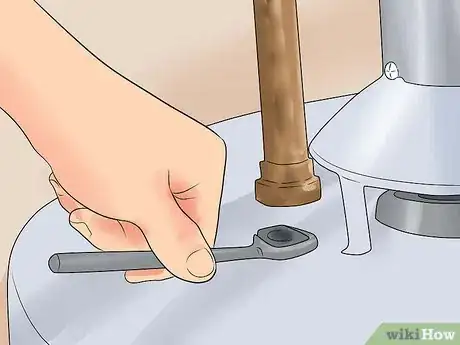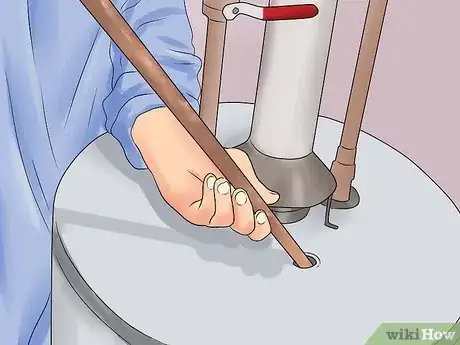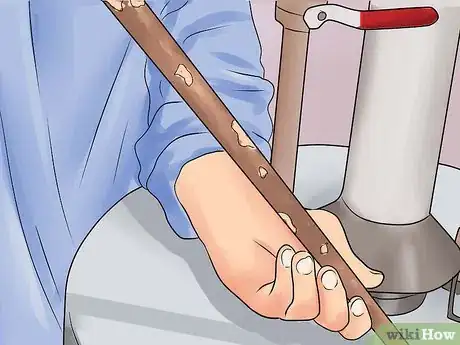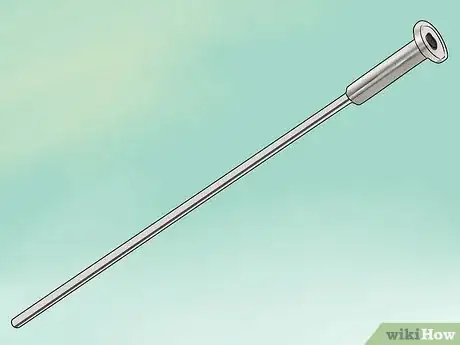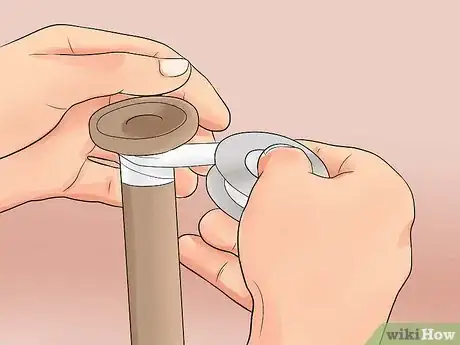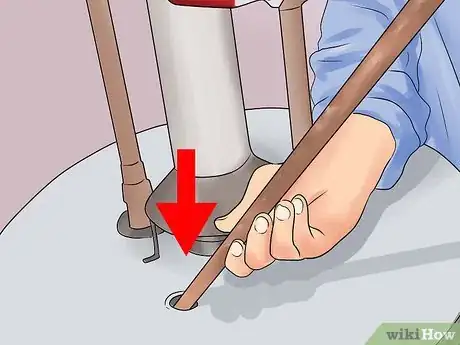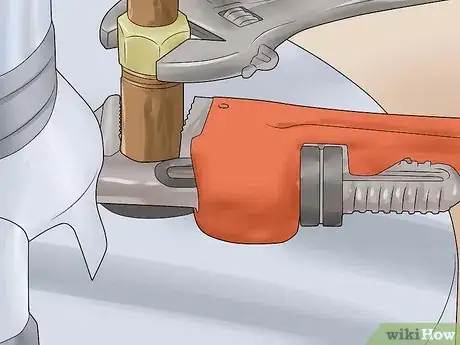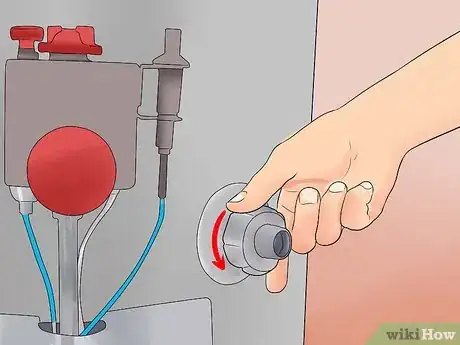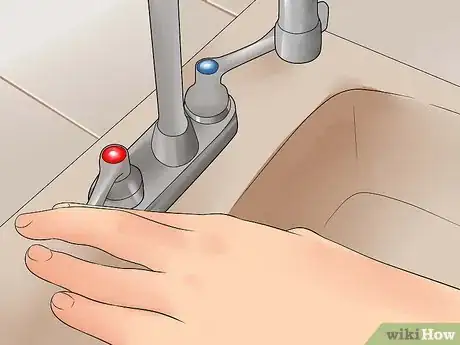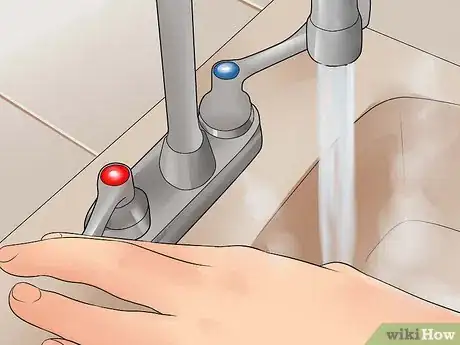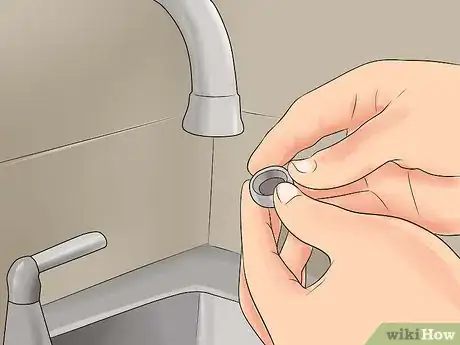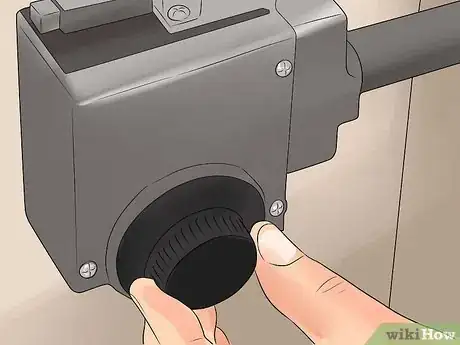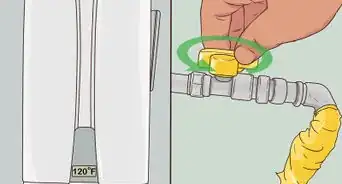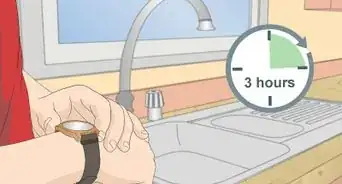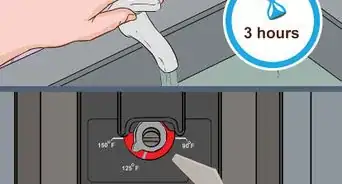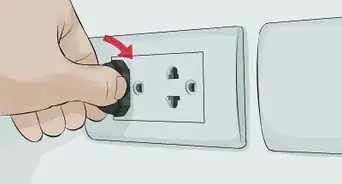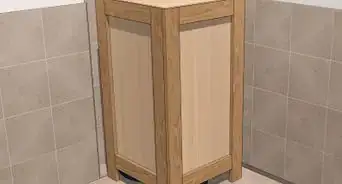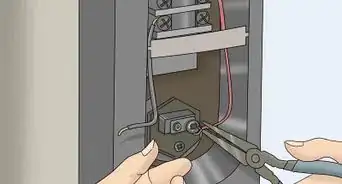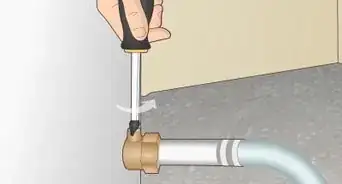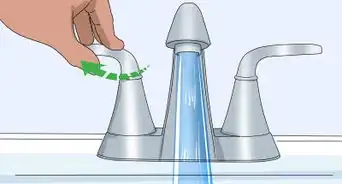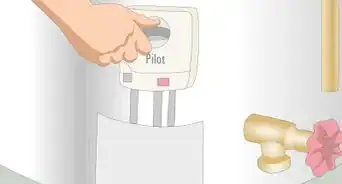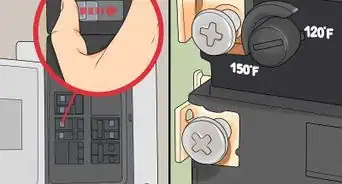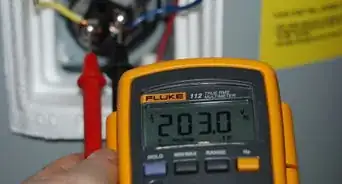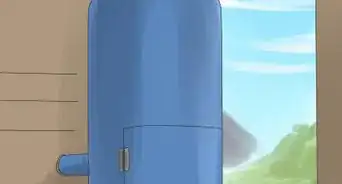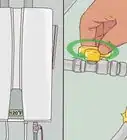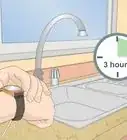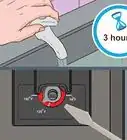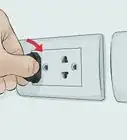wikiHow is a “wiki,” similar to Wikipedia, which means that many of our articles are co-written by multiple authors. To create this article, 10 people, some anonymous, worked to edit and improve it over time.
This article has been viewed 62,490 times.
Learn more...
Inside a typical water heater tank, the dip tube transfers cold water from the top of the tank to the bottom of the tank, resulting in a faster heating process. Dip tubes can, however, wear out or malfunction. They may also disintegrate or break. To avoid hiring a professional, you can fix dip tubes yourself and extend the life of your water heater.
Steps
Testing for a Broken Dip Tube
-
1Check when your water heater was manufactured. Nearly all gas and electric water heaters manufactured between 1993 and 1997 were installed with defective dip tubes. The dip tubes were made of a material that quickly degraded and disintegrated, causing dip tube failure.[1]
- Look on your water heater for the serial number. This is probably on the back of your tank. The first four numbers typically display the month and year of when the heater was made (for example, 0200 means that the heater was made in February 2000).
- If the third and fourth numbers in the serial number are 93, 94, 95, 96, or 97, you may have a defective dip tube.
-
2Look for small pieces of plastic in your shower nozzle or faucet aerators. Take apart your shower nozzle or faucet strainer. If the dip tube has disintegrated, then you might find small pieces of white plastic inside your shower nozzle or faucets.[2]Advertisement
-
3Run hot water for a few minutes through your a faucet without the aerator or strainer. If you find very small chunks of white and gray material, this may be plastic from your dip tube.
-
4Examine the particles. If they are rectangular and sharp on some edges, they may be plastic. Sediment particles, on the other hand, will likely be rough and roundish, but with irregular shapes.[3]
- If you have a microscope, use it to have a closer look at the particles.
- Very small fragments of these plastic particles can get into your water supply, but experts say that they are non-toxic and do not pose a health risk. They can, however, be damaging to appliances that use water such as a dishwasher or washing machine.
-
5Put the particles in a small bowl of water. If they float, they are probably plastic. If they dissolve, they are probably sediment.
-
6Put the particles in a small bowl of vinegar. Plastic will not dissolve and will float, whereas sediment will do the opposite.
-
7Test the water temperature. Attach a hose to the drain valve, open the valve, and keep the water turned on. Water will come out of the drain hose and should cool rapidly. If this is the case, the dip tube is probably still functioning properly and your water heater may have a different problem.
Draining the Tank
-
1Turn off all power to the water heater. Turning off the power to the water heater is an essential step, as you can risk electric shock if you don’t turn it off.
- For an electric water heater, turn the power off at the breaker in the circuit box.
- For a gas heater, turn off the pilot light on the tank.
-
2Turn off the cold water going to the tank. Locate the cold inlet pipe valve and turn it clockwise. This will keep any cold water from entering the tank while you are working.
- The inlet pipe valve should be on the right side of the tank.
-
3Open the tank’s pressure relief valve. The pressure relief valve allows pressure to escape from the tank in order to break the vacuum that can build up inside the tank. This valve is usually located near the top of the water heater. Open the valve to let the pressure escape.[4]
- Place a bucket under this valve to catch any water that might drain out at this valve point.
-
4Attach a garden hose to the drain valve. At the bottom of the tank, there is a drainage valve. Hook up the hose to this valve. Put the other end of the garden hose either in the bathtub or direct it outside.
- This water will be extremely hot, so take care to drain the water where it will not harm anyone or anything.
-
5Drain the water tank. Turn the drain valve so that the water starts to drain out of the tank. Make sure the water is not overflowing at the other end of the hose. Drain the tank completely.
- If your tank sits in a low area of your house (such as the basement), you may need to use an electric pump to help drain out the water. Pump the water into a bathtub in a higher location (upstairs bathroom, for example).[5]
Removing the Old Dip Tube
-
1Make sure the power is still turned off to the water heater. Double check to make sure no one has unintentionally switched on the power while you’ve been draining the tank.
-
2Locate the dip tube and remove the pipe nipple and connector. The top of the dip tube sticks up on the top right of the tank and has a pipe nipple and cold water pipe connector. By removing the connector, you'll gain access to the dip tube inlet. Turning the connector and nipple counterclockwise with a wrench should be enough to remove them.
-
3Take out the dip tube. You may be able to pull it out by inserting your little finger into the top of the tube and moving it in a circular upward motion. Once you get it moved up a few inches, you should be able to grab it with your hand and pull it the rest of the way out.
- You can also use a wooden dowel to hook in the metal ring that sits inside the top of the dip tube. The handles of pliers might also work.
-
4Inspect the dip tube for cracks and small holes. Over time, the dip tube can corrode or become cracked. By taking out the dip tube and examining it closely, you can see if there is any surface damage to it.
- Run water through the dip tube to see if any water leaks through cracks or holes that you can’t see. Start with a dry dip tube so that you will be able to notice water leaks.
Reinstalling the Dip Tube
-
1Buy a replacement dip tube. Dip tubes made from polyethylene are readily available at home supply or hardware stores for $5-$20. Most residential water heaters have a standard size dip tube. Check your water tank’s brand and model number to get the right dip tube.[6]
- Water heaters typically use a straight dip tube, although some people prefer a curved dip tube. A curved tube swirls the water in the tank when water travels through it, which helps reduce the amount of sediment buildup in the bottom of your tank.
- Check to see if your water heater is under warranty. You may be able to get a replacement dip tube for free if yours is defective.
-
2Wrap plumber’s tape around the top of the replacement dip tube. Plumber’s tape is a thin sealing tape that comes in a roll. It is used to seal off any possible drips or leaks in the threads of two parts that screw together.
-
3Insert the replacement dip tube into the inlet. Push the dip tube in all the way until the tip of the tube is flush with the tank. Be gentle with this installation.
- Curved tubes should point away from the drain valve so that they swirl the water inside the tank. Look inside the dip tube to find a mark. This mark indicates the direction of the tube’s curve so you can keep track of the direction that this curve is pointing when you install the tube.
-
4Replace the cold water pipe connector. Use a pipe wrench to tighten it firmly, making sure that it will not come out or fall off.
Refilling the Tank
-
1Close the drain valve and disconnect the hose. Close the drain valve on your water tank before you disconnect the hose so that any remaining water won’t drip on the floor. Take the hose off the drain valve. Turn the pressure relief valve counter-clockwise to close it off.
- Pour out the hose in the tub to get remaining water out of the hose.
-
2Turn on all hot faucets and open the cold inlet pipe valve. Turn each faucet in your house to hot and turn them on. You also need to open the cold inlet pipe valve so that the water heater can refill with water.
-
3Turn off faucets. When each faucet has hot water coming out of it, turn it off. Let the faucets run for 3 minutes before shutting them off. Your tank has been drained and refilled.[7]
-
4Flush out faucet aerators and strainers. Each faucet in your house, along with other fixtures that attach to appliances such as a dishwasher or washing machine, will need to be flushed out to remove plastic particles and other debris. Clean these and run clean water through them several times.
- It is possible, although unlikely, that you need to replace fixtures that have been damaged by debris from your water heater.
-
5Turn the power back on. Switch power back on to the water heater at the circuit breaker for electric water heaters, or turn on the pilot light for gas heaters.
Community Q&A
-
QuestionMy freezer is frosting very fast. What should I do?
 Community AnswerThe likely cause of this is a poor seal of the door gasket. One easy test you can do is to close the freezer door on a dollar bill with part of the dollar bill outside the freezer. Pull on the dollar bill to remove it from the freezer while leaving the door closed. There should be some tension on the bill. Repeat this process going entirely around the door of the freezer. When or if you find a spot with very little or no resistance, you have found the gap in the gasket that is allowing moisture, mixed with the air, to enter your freezer. Make sure your gasket is in good condition and the door closes completely and this should stop the frosting up from occurring so quickly.
Community AnswerThe likely cause of this is a poor seal of the door gasket. One easy test you can do is to close the freezer door on a dollar bill with part of the dollar bill outside the freezer. Pull on the dollar bill to remove it from the freezer while leaving the door closed. There should be some tension on the bill. Repeat this process going entirely around the door of the freezer. When or if you find a spot with very little or no resistance, you have found the gap in the gasket that is allowing moisture, mixed with the air, to enter your freezer. Make sure your gasket is in good condition and the door closes completely and this should stop the frosting up from occurring so quickly.
Warnings
- You may need replace the entire water heater if the dip tube has caused too much damage to the inside of the tank.⧼thumbs_response⧽
- Always wear protective gear when working on your water heater. This includes gloves, goggles and clothing that can get dirty.⧼thumbs_response⧽
- Do not choose a dip tube made of steel or copper. This will cause your water tank to rust and will ruin your tank.[8]⧼thumbs_response⧽
References
- ↑ http://www.ronhazelton.com/tips/faulty_water_heater_dip_tube_-_diagnosis_and_replacement
- ↑ http://www.ronhazelton.com/tips/faulty_water_heater_dip_tube_-_diagnosis_and_replacement
- ↑ http://inspectapedia.com/plumbing/Hot_Water_Tank_Debris_Flush.htm
- ↑ https://www.lowes.com/n/how-to/water-heater-maintenance
- ↑ http://www.improvenet.com/a/water-heater-maintenance
- ↑ http://www.home-repair-central.com/purchasing-a-water-heater-dip-tube.html
- ↑ https://www.lowes.com/n/how-to/water-heater-maintenance
- ↑ http://www.waterheaterrescue.com/pages/WHRpages/English/Troubleshooting/Tanklets/water-heater-dip-tubes.html
About This Article
To change a dip tube, you'll first need to buy a new dip tube at a home supply or hardware store for $5 to $20. Then, you'll need to turn off the power to your heater, drain the tank, and remove the old dip tube and its connector pieces from the tank. From there, wrap plumber's tape around the top of your new dip tube and install it, then close the drain valve and disconnect the hose. Finally, run every sink in your house on hot, until they run hot, before turning your power back on. For more tips, like how to check for broken plastic from your dip tube in your water, keep reading!
